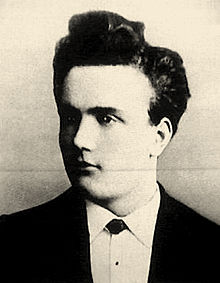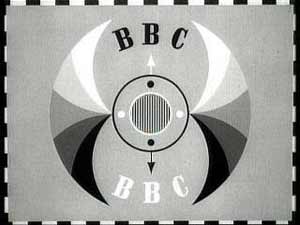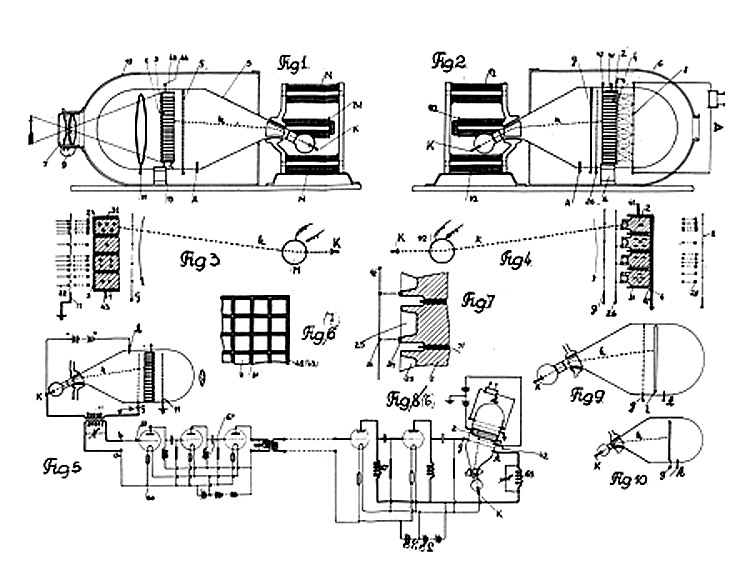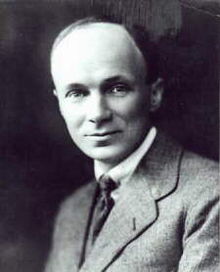 Science and technology exposed
Science and technology exposed
Television History 2
Always under construction
Note: The paradox
It’s an unfortunate fact, but most people don’t have a clue what science is or what it does. If you ask a scientist they will tell you that science is what the academic scientists do. According to them they ARE SCIENCE; any other kind of science is pseudo-science – something that pretends to be science. And so it follows that the majority of the TV technology presented below is pseudo-science, because most of it was not invented or developed by a scientist. Scientists and especially physicists do not normally invent and have very few original ideas. It is maybe a surprising fact that all manner of highly educated persons find it difficult to form new original ideas and some of the most highly educated are scientists.
TV Pioneers
Television is radio with pictures and by the time a recognisable TV set evolved in the early decades of the 1900’s the use of radio was commonplace. Although we tend to think of early TV as being based on the cathode ray tube, there were, during its early development a number of mechanical systems used for relaying pictures before it became possible, due to a lack of contemporary technology, to enable the use of an all-electronic system:
Mechanical TV

1884 Paul Gottlieb Nipkow
inventors.about.com: “Paul Nipkow (German technician and inventor) developed a rotating-disc technology to transmit pictures over wire in 1884 called the Nipkow disk. (see below) Paul Nipkow was the first person to discover television’s scanning principle, in which the light intensities of small portions of an image are successively analysed and transmitted.”50 This system was later used by engineer John Logie Baird.
1902 Transmission of still pictures TV related.
Wiki: “Between 1902 and 1907, Arthur Korn German-born physicist and mathematician invented and built the first successful signal-conditioning circuits for image transmission. The circuits overcame the image-destroying lag effect that is part of selenium photocells. Korn’s compensation circuit allowed him to send still pictures by telephone or wireless between countries and even over oceans, while his circuit operated without benefit of electronic amplification. Korn’s success at transmitting halftone still images suggested that such compensation circuits might work in television. Baird was the direct beneficiary of Korn’s research and success..” 51

Wiki: “He (Korn) pioneered the use of light sensitive selenium cells which took over from the function of the stylus and used a Nernst lamp as a light source. On the 18th October, 1906, he managed to transmit a photograph of Crown Prince William over a distance of 1800 km.” 52
Korn’s rise to physicist status is somewhat unusual: Wiki: “…He then studied physics and mathematics in Leipzig at the age of 15, from where he graduated in 1890. Afterwards he studied in Berlin, Paris, London and Würzburg. In 1895 he became a lecturer in law at the University of Munich, and was appointed professor in 1903. In 1914 he accepted the chair of physics at the Berlin Institute of Technology.” 53
A somewhat confusing rise to physicist status.

1907 Electronic-mechanical TV
Boris Rosing
inventors.about.com: “Russian scientist Boris Rosing (who worked with Vladimir Zworykin) used a CRT in the receiver of a television system.” 54
bairdtelevision.com: “Rosing’s system employed a mirror-drum apparatus as camera and a cathode-ray tube as receiver to transmit black-and-white silhouettes of simple shapes. The cathode-ray tube had been developed a decade earlier by a German, Karl Ferdinand Braun (in 1897). Rosing’s system was primitive, but it was one of the first experimental demonstrations where the cathode ray tube was employed for the purposes of television. Vladimir Zworykin (before emigrating to the U.S.A.) was a student of Rosing and assisted him in some of his laboratory work. (See below) ” 55

1908 Alan Archibald Campbell-Swinton
discoveriesinmedicine.com: “During the first three decades of the twentieth century, inventors continued to devise uses for cathode ray technology. Inspired by Braun’s oscilloscope, A. A. Campbell-Swinton suggested that a cathode ray tube could be used to project a video image upon a screen. Unfortunately, the technology of the time was unable to match Campbell-Swinton’s vision.” 56
But then Wiki tells us: “Engineer Campbell-Swinton’s letter published in the 18 June 1908 issue of Nature was a suggestion rather than any kind of practical invention. Philo T Farnsworthan was already hard at work on the idea before the letter was sent.” 57
1922 Philo T. Farnsworth see lower down —

1923 Electro-mechanical TV
Wiki: “Vladimir Zworykin, (not a scientist) Russian-American inventor, engineer, and pioneer of television technology, helped Boris Rosing (a scientist) with experimental work on television in the basement of Rosing’s private lab at the School of Artillery of Saint Petersburg, Russia. Rosing had filed his first patent on a television system in 1907, featuring a very early cathode ray tube as a receiver, and a mechanical device as a transmitter. Its demonstration in 1911, based on an improved design, was among the first demonstrations of TV of any kind. He summarized the resulting invention in two patent applications. The first, entitled “Television Systems”, was filed on December 29, 1923, and was followed by a second application in 1925 of essentially the same content, but with minor changes and the addition of a Paget-type screen for colour transmission and reception. He was awarded a patent for the 1925 application in 1928 and two patents for the 1923 application that was divided in 1931, although the equipment described was never successfully demonstrated.” 58
Note: For those who have been told that it was scientists who did it all – most of these people are not using any kind of scientific theory as this is a new area of research, untouched by the vast majority scientists of the day who were more interested in the new particle physics.

1923 Mechanical TV
“Charles Jenkins (not a scientist) invented a mechanical television system called radiovision and claimed to have transmitted the earliest moving silhouette images on June 14, 1923.” 59
Wiki: He published an article on “Motion Pictures by Wireless” in 1913, but it was not until December 1923 that he transmitted moving silhouette images for witnesses, and it was June 13, 1925 that he publicly demonstrated synchronized transmission of pictures and sound. He was granted the U.S. patent No. 1,544,156 (Transmitting Pictures over Wireless) on June 30, 1925 (filed on March 13, 1922). https://en.wikipedia.org/wiki/Charles_Francis_Jenkins

1926 Mechanical TV
tvhistory.tv: John Logie Baird
“On January 23, 1926, John Logie Baird (Scottish engineer and inventor) gave the world’s first public demonstration of a mechanical television apparatus to approximately 40 members of the Royal Institution at his laboratory on Frith Street. These were images of living human faces, not outlines or silhouettes, with complete tonal gradations of light and shade.” 60
Wiki: “In 1928, he developed an early video recording device, which he dubbed Phonovision. The system consisted of a large Nipkow disk attached by a mechanical linkage to a conventional 78-rpm record-cutting lathe. The result was a disc that could record and play back a 30-line video signal. Technical difficulties with the system prevented its further development, but some of the original phonodiscs have been preserved, and have since been restored by Donald McLean, a Scottish electrical engineer.” 61
 1929 Baird and he BBC
1929 Baird and he BBC
thocp.net: For some time Baird’s exploits had captivated the popular imagination. The press hailed him as a visionary and criticized the BBC, still a fledgling radio broadcaster, as inept and behind the times. One journalist went so far as to suggest that the BBC be dismantled and replaced by Baird Television Limited. Considering him very much an outside competitor, the BBC turned down Baird’s requests for a transmitting license. Baird rebutted by first threatening to make pirate television broadcasts in 1928, then actually making them from Berlin in 1929. The BBC soon relented and granted a license. The press criticism and Baird’s guerrilla tactics gnawed at J.C.W. Reith, the BBC’s general manager, and tainted his perception of Baird. Still, when Baird offered to demonstrate his invention for the BBC in 1929, Reith grudgingly accepted. Baird’s system, he acquiesced, had potential. It was the beginning of an uneasy relationship that lasted until 1935. In September of 1929, Baird, in association with the BBC, began a series of experimental television transmissions. http://www.thocp.net/biographies/baird_john.htm
Nothing changes!
Electronic TV pictures and Kalman Tihanyi

Wiki: Hungarian inventor, “Tihanyi called his fully-electronic television system “Radioskop”, and his application contained 42 pages detailing its design and mass production. Though it bears certain similarities to earlier proposals employing a cathode ray tube (CRT) for both transmitter and receiver…
From 1929, Tihanyi worked on television guidance for defence applications, building prototypes of a camera for remotely guided aircraft in London for the British Air Ministry, and later adapting it for the Italian Navy. In 1929, he invented the first infrared-sensitive (night vision) electronic television camera for anti-aircraft defense in Britain.
Tihanyi’s U.S. patents for his display and camera tubes, assigned to RCA, were issued in 1938 and 1939, respectively.
1936 Tihanyi described the principle of “plasma television” and conceived the first flat-panel television system.” 62 See below for later claims of invention by academics.

From pocket-lint.com: Kalman Tihanyi, a Hungarian engineer, developed the first flat-panel display system in 1963, and about one year later, a monochrome plasma display was invented and presented at the University of Illinois at Urbana-Champaign for the PLATO Computer System.
Manufacturers like Ownes-Illinois and Burroughs Corporation made plasma displays, which were known for their neon orange and monochrome look, throughout the 1970s. IBM then popped into the plasma scene in 1983, when it introduced a 19-inch orange-on-black monochrome display.
Colour
The 1990s saw the emergence of full-colour plasma displays. Fujitsu demonstrated a 21-inch hybrid display in 1992 at the University of Illinois at Urbana-Champaign, and then three years later, it introduced the first 42-inch plasma display with a 852×480 resolution. http://www.pocket-lint.com/news/131549-farewell-plasma-tv-the-moments-that-defined-flatscreen
Wiki and my own update: “Kalman Tihanyi (28 April 1897, zbg – 26 February 1947, Budapest), was a Hungarian (not a) physicist, (but an) electrical engineer and inventor. One of the early pioneers of electronic television, he made significant contributions to the development of cathode ray tubes (CRTs), which were bought and further developed by the Radio Corporation of America (later RCA) and German companies Loewe and Fernseh AG. He invented and designed the world’s first automatic pilotless aircraft in Great Britain.” 63 Why do they keep calling inventors physicists?

1922 Philo T. Farnsworth, The forgotten inventor
From discoveriesinmedicine.com “It was not until 1922 that Philo T. Farnsworth used a magnet to focus a stream of electrons onto a screen, producing a crude image. Though the first of its kind, Farnsworth’s invention was quickly superseded by Vladimir Zworykin’s kinescope, the ancestor of the modern television.” 64
The Zworykin kinescope TV never worked?
nationalvanguard.org: 1929 “According to the book Philo T. Farnsworth: The Father of Television by Donald G. Godfrey, the first human images transmitted by Farnsworth were of his wife and her brother, Cliff Gardner. A 3 1/2-inch-square image of his wife with her eyes closed was transmitted on October 19, 1929, Gardner wrote. The book lists her as first woman on TV’.
1957 “Farnsworth an American inventor and television pioneer…predicted HDTV and solid-state flat-screen technology in a 1957 interview: (See Kalman Tihanyi above)
“[W]e think we can eventually get in excess of 2000 lines instead of 525 and do it on an even narrower channel which will make for a much sharper picture. We believe in the picture-frame type of a picture, where the visual display will be just a screen. And we hope for a memory, so that the picture will be just as though its pasted on there.” 65
“Sadly, credit for his pioneering work was almost taken from Farnsworth when RCA under David Sarnoff, with a potential profit in the hundreds of millions if they prevailed, claimed the innovation was the work of one of its house engineers (Klmn Tihanyi above)?. But in 1935, the courts ruled that Farnsworth was the real inventor…
…Nevertheless Farnsworth received little recognition or monetary compensation in later years, because of what some say was purposeful revenge by the Jewish establishment for his defeat of Sarnoff. Many scholars also blame Sarnoff for setting back the development of FM radio (see chapter Radio) for decades because it threatened the AM networks and AM receiver technology in which RCA was heavily invested and for thereby causing the suicide of another European-American innovator, Edwin Armstrong, who invented FM radio in 1933” 66
“At the time he died, Farnsworth held 300 U.S. and foreign patents. His inventions contributed to the development of radar, infra-red night vision devices, the electron microscope, the baby incubator, the gastroscope, and the astronomical telescope.
Wiki: Farnsworth said in an interview, “ And …we hope for a memory, so that the picture will be just as though it’s pasted on there.”” 67 What was required was miniaturised transistor memory technology that did not exist in 1957.
Wiki Talk: There are several good books on Farnsworth’s invention of electronic television. It is very clear that Zworykin visited Farnsworth’s lab under false pretenses, copied his image dissector at RCA, and said he wished he had invented it. Farnsworth’s breakthrough was all his own, and the guys at RCA did everything they could to strip him of the rights and honor due for that. Anyone who wants to contradict that here would well to read one or more of these histories first. Dicklyon 05:59, 12 June 2006 (UTC) https://en.wikipedia.org/wiki/Talk%3APhilo_Farnsworth#Old_discussion
Flat Panel Display Plasma, LED and Liquid Crystal
Wiki: “The first ever flat panel display was invented in 1964 at the University of Illinois. (I don’t think that’s true – see above)
The first-ever active-matrix addressed display was made by T Peter Brody’s Thin-Film Devices department at Westinghouse Electric Corporation in 1968.[4]
As of 2012, 50% of global market share in flat panel display (FPD) production is by Taiwanese manufacturers such as AU Optronics and Chimei Innolux Corporation.” 68
There is very little information about the invention of flat panel displays, something not unknown in today’s technology.
Wiki: “Burroughs Corporation, a maker of adding machines and computers, developed the Panaplex display in the early 1970s. The Panaplex display, generically referred to as a gas-discharge or gas-plasma display, uses the same technology as later plasma video displays, but began life as seven-segment display for use in adding machines. They became popular for their bright orange luminous look and found nearly ubiquitous use in cash registers, calculators, pinball machines, aircraft avionics such as radios, navigational instruments, and stormscopes; test equipment such as frequency counters and multimeters; and generally anything that previously used nixie tube or numitron displays with a high digit-count throughout the late 1970s and into the 1990s. These displays remained popular until LEDs gained popularity because of their low-current draw and module-flexibility, but are still found in some applications where their high-brightness is desired, such as pinball machines and avionics. Pinball displays started with six- and seven-digit seven-segment displays and later evolved into 16-segment alphanumeric displays, and later into 128×32 dot-matrix displays in 1990, which are still used today. ” 69
If Tihanyi described the principle of plasma television and conceived the first flat-panel television system in 1936 and Farnsworth predicted HDTV and solid-state flat-screen technology in 1957, the principles must already have been known. How can the “first ever flat panel” have been “invented at the University of Illinois in 1964”? Prevarications from the halls of academea. 70
1907 Early LED history

From radio-electronics.com: The first recorded effects of the light emitting diode effect were noticed back at the beginning of the twentieth century. A British engineer named H J Round working for Marconi was undertaking some experiments using crystal detectors. At the time radio detectors were one of the major limiting factors within the early wireless of radio sets.
The early detectors were often made by using a small piece of material – we would now know them as forms of semiconductor – and placing a small wire onto the surface. These were called “Cat’s Whiskers” for obvious reasons. In trying to investigate the effects and improve their performance, Round had passed a current through some of his detectors. He noted that one of them emitted light when a current was passed through it. Although he did not understand the mechanism for the effect, he published his findings in 1907 in a magazine of the day named Electrical World. http://www.radio-electronics.com/info/data/semicond/leds-light-emitting-diodes/history.php
To the Editors of Electrical World:
SIRS: – During an investigation of the unsymmetrical passage of current through a contact of carborundum and other substances a curious phenomenon was noted. On applying a potential of 10 volts between two points on a crystal of carborundum, the crystal gave out a yellowish light. Only one or two specimens could be found which gave a bright glow on such a low voltage, but with 110 volts a large number could be found to glow. In some crystals only edges gave the light and others gave instead of a yellow light green, orange or blue. In all cases tested the glow appears to come from the negative pole, a bright blue-green spark appearing at the positive pole. In a single crystal, if contact is made near the center with the negative pole, and the positive pole is put in contact at any other place, only one section of the crystal will glow and that same section wherever the positive pole is placed.
There seems to be some connection between the above effect and the e.m.f. produced by a junction of carborundum and another conductor when heated by a direct or alternating current; but the connection may be only secondary as an obvious explanation of the e.m.f. effect is the thermoelectric one. The writer would be glad of references to any published account of an investigation of this or any allied phenomena.
New York, N. Y.
H. J. Round https://en.wikipedia.org/wiki/H._J._Round#Light-emitting_diode
References continued from part 1
50 http://inventors.about.com/od/tstartinventions/a/Television.htm
51 http://en.wikipedia.org/wiki/John_Logie_Baird
52 http://en.wikipedia.org/wiki/Arthur_Korn
53 http://en.wikipedia.org/wiki/Arthur_Korn
54 http://inventors.about.com/od/cstartinventions/a/CathodeRayTube.htm
55 http://www.bairdtelevision.com/rosing.html
56 http://www.discoveriesinmedicine.com/Bar-Cod/Cathode-Ray-Tube-CRT.html#ixzz1QfMD8iN2
57 http://en.wikipedia.org/wiki/Alan_Archibald_Campbell-Swinton
58 http://en.wikipedia.org/wiki/Vladimir_K._Zworykin
More info on Vladimir Kozmich Zworykin:
http://www.redorbit.com/education/reference_library/notable_figures/inventors/2582454/zworykin_vladimir_kozmich/index.html59
http://inventors.about.com/od/tstartinventions/a/Television.htm
60 http://www.tvhistory.tv/pre-1935.htm
61 http://en.wikipedia.org/wiki/John_Logie_Baird#Other_inventions
62 http://en.wikipedia.org/wiki/K%C3%A1lm%C3%A1n_Tihanyi
63 http://en.wikipedia.org/wiki/K%C3%A1lm%C3%A1n_TihanyiTihanyiradioskoppatent.
http://www.hungarianhistory.com/mszh/etihanyi.htm
http://www.bvws.org.uk/405alive/history/revisionist_history.html
64 http://www.discoveriesinmedicine.com/Bar-Cod/Cathode-Ray-Tube-CRT.html#ixzz1QfMD8iN2
65 http://nationalvanguard.org/2010/11/philo-farnsworth-almostforgotten-genius/
http://en.wikipedia.org/wiki/Philo_Farnsworth
66 http://nationalvanguard.org/2010/11/philo-farnsworth-almostforgotten-genius/
67 http://en.wikipedia.org/wiki/Philo_Farnsworth
68 http://en.wikipedia.org/wiki/Flat_panel_display
69 http://en.wikipedia.org/wiki/Plasma_display#History
70 http://en.wikipedia.org/wiki/Before_1925_in_television
